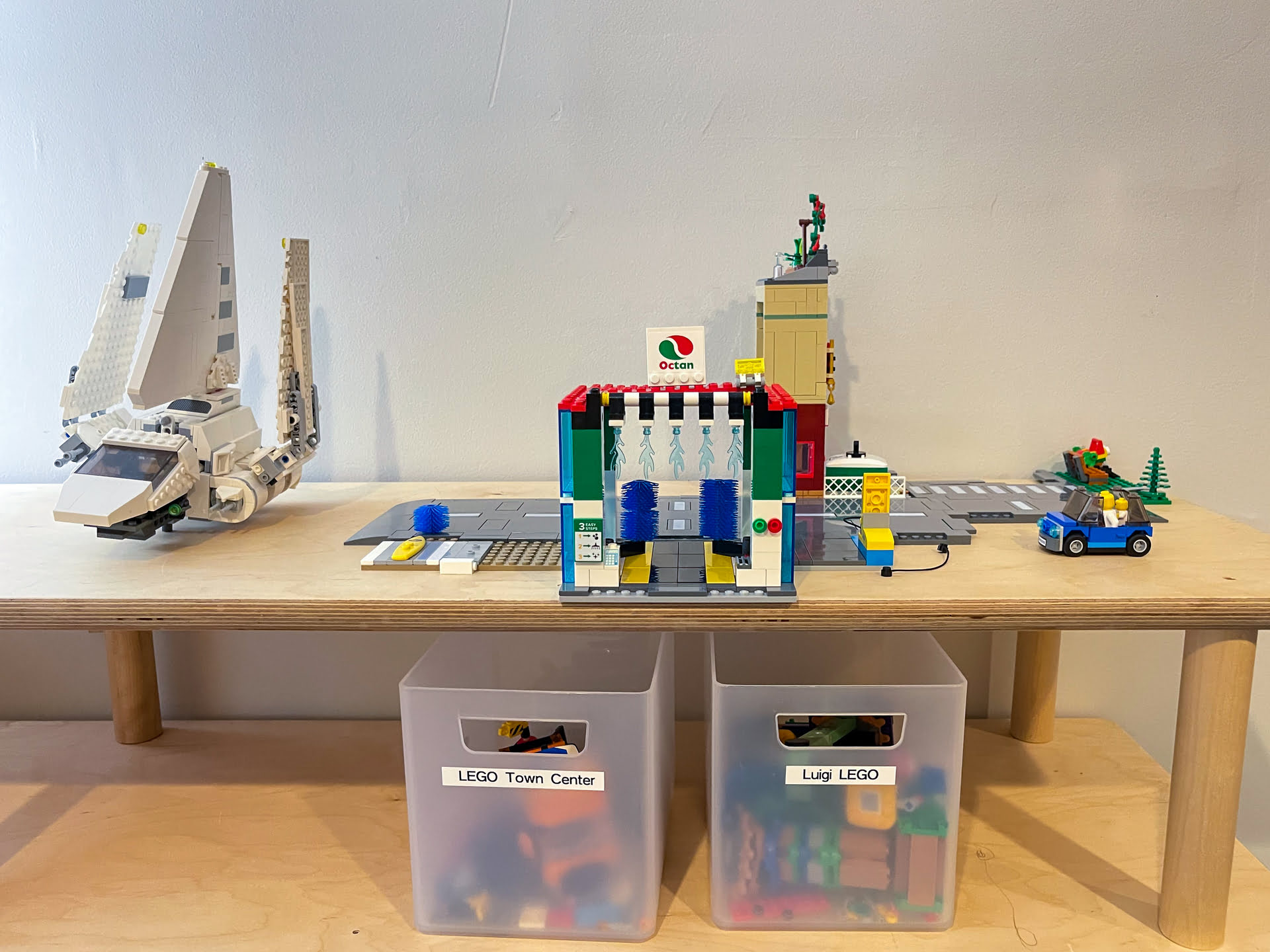Home>diy>Building & Construction>What Is The Final Completion In Construction


Building & Construction
What Is The Final Completion In Construction
Modified: January 9, 2024
Discover the importance of the final completion phase in building construction. Understand the key steps involved and ensure a successful project delivery.
(Many of the links in this article redirect to a specific reviewed product. Your purchase of these products through affiliate links helps to generate commission for Storables.com, at no extra cost. Learn more)
Introduction
Welcome to the world of construction, where every step counts towards creating stunning buildings that stand the test of time. But what happens when the construction process is complete? Is the project truly finished? Enter the concept of final completion in construction.
Final completion is a crucial milestone in the construction industry. It marks the point where the project is deemed finished and ready for occupancy or use. This stage involves several critical activities, including inspections, documentation, client acceptance, and financial closure.
In this article, we will delve deeper into the concept of final completion in construction. We will explore its definition, its importance, and the various steps involved in achieving it. So, buckle up and join us on this journey to uncover the intricacies of final completion in construction.
Key Takeaways:
- Final completion in construction is a pivotal moment that ensures the building meets quality standards, satisfies the client, complies with regulations, and sets the stage for a smooth handover process.
- The final completion stage involves meticulous documentation, thorough inspections, client acceptance, and financial closure, emphasizing the importance of safety, quality assurance, and transparent financial practices.
Read more: How To Complete The Buyer’s Final Inspection
Definition of Final Completion in Construction
Final completion in construction signifies the point at which a project is considered fully finished and meets all the requirements outlined in the contract, plans, and specifications. It is the culmination of all the efforts, resources, and time invested in constructing a building.
At the final completion stage, the construction site is transformed into a functional and safe environment for its intended use. This includes ensuring that all construction activities, systems, and components are installed correctly, meet quality standards, and are compliant with local building codes and regulations.
Final completion encompasses not only the physical aspects of the project but also the necessary documentation, client acceptance, financial closure, and other related activities. It is the final step before the handover of the building to the owner or client.
It is essential to note that final completion does not necessarily mean that all the work on the project is finished. It signifies that the project is in a state where it can be occupied or used by the client, with any remaining tasks considered as minor adjustments or defects that can be addressed after occupancy. These tasks are typically addressed during the warranty or defects liability period.
The exact definition of final completion may vary depending on the specific project, contract provisions, and jurisdiction. Therefore, it is crucial for all parties involved in the construction process to have a clear understanding of the definition of final completion as outlined in the contract documents.
Importance of Final Completion
The final completion stage holds immense significance in the construction industry. It serves as a critical moment where various stakeholders come together to ensure that the project has been successfully executed and is ready for occupancy or use. Let’s explore why final completion is important:
1. Verification of Quality: Final completion involves rigorous inspections and assessments to ensure that the construction work meets the specified quality standards. This includes checking the structural integrity, functionality of systems, and overall workmanship. It provides an opportunity to identify any deficiencies or defects that need to be addressed before the client assumes control of the building.
2. Client Satisfaction: Final completion plays a vital role in achieving client satisfaction. It ensures that the building has been delivered as per the client’s expectations, meeting the agreed-upon design, finishes, and functionality. By successfully completing the project, it builds trust and enhances the reputation of the construction company.
3. Legal and Regulatory Compliance: Final completion ensures that the construction project adheres to all applicable legal, regulatory, and building code requirements. It verifies that the necessary permits have been obtained, inspections have been conducted, and all relevant documentation is in order. This compliance helps protect the interests of both the client and the construction company.
4. Handover Process: Final completion serves as a transition point for the handover of the building to the client. It involves the transfer of responsibility from the construction team to the client, ensuring a smooth transition from construction to occupancy. This includes providing necessary documentation, training on systems and operations, and addressing any concerns or queries the client may have.
5. Financial Closure: Final completion is closely tied to financial closure. It signifies the completion of contractual obligations, allowing for the release of final payments to the construction company. This financial closure is crucial for the financial health of the construction company and ensures the project’s overall viability.
6. Risk Management: Final completion helps mitigate risks associated with construction projects. It allows for a comprehensive review of the building’s safety measures, including fire protection systems, the stability of structural components, and compliance with health and safety regulations. By addressing any potential hazards or deficiencies, final completion contributes to a safe and secure building environment.
In summary, final completion is vital for verifying quality, ensuring client satisfaction, complying with legal and regulatory requirements, facilitating the handover process, achieving financial closure, and managing project risks. It marks the end of the construction phase and sets the stage for the building’s successful occupancy or use.
Project Handover Process
The project handover process is a crucial component of the final completion stage in construction. It involves the transfer of the completed building from the construction team to the client, ensuring a smooth transition towards occupancy or use. Let’s explore the key steps involved in the project handover process:
1. Preparation: Before initiating the handover process, the construction team prepares the necessary documentation, including record drawings, operation and maintenance manuals, warranties, and any other relevant paperwork. This ensures that all essential information is compiled and ready for handover.
2. Client Walkthrough: A client walkthrough is conducted to inspect the building and identify any deficiencies or snags that need to be addressed. Both the construction team and the client walk through the building together, checking each area, system, and component for any outstanding issues. This step allows for open communication and ensures that the client’s concerns are addressed.
3. Punch List: Based on the client walkthrough and any other inspections, a punch list is created. This is a detailed list of the remaining tasks, adjustments, or defects that need to be rectified before the building can be considered fully complete. The construction team takes prompt action to address the items on the punch list, ensuring that they are resolved efficiently.
4. Systems and Operations Training: As part of the handover process, the construction team provides training to the client on the operation and maintenance of various building systems, such as electrical, plumbing, HVAC, and fire protection. This training equips the client with the knowledge required to effectively manage and maintain the building.
5. Final Inspections: Before the handover is finalized, final inspections are conducted to verify that all necessary adjustments and repairs have been completed as per the punch list. These inspections are typically carried out by both the construction team and relevant authorities to ensure compliance with safety and building codes.
6. Certificates and Approvals: The construction team obtains the necessary certificates and approvals required for the building’s occupation. This includes fire safety certificates, completion certificates, and any other permits or clearances mandated by local authorities. These documents serve as proof that the building is in compliance with regulations and ready for use.
7. Handover Documentation: Once all the above steps are completed, the construction team compiles the final handover documentation. This includes all certifications, permits, warranties, operation and maintenance manuals, as well as record drawings. The documentation is handed over to the client to assist them in managing the building effectively.
The project handover process ensures a seamless transition from construction to occupancy or use. It involves thorough inspections, resolving outstanding issues, providing necessary training, obtaining approvals, and delivering the essential documentation. A well-executed handover process helps establish a strong relationship between the construction team and the client, resulting in a successful project outcome.
Documentation and Paperwork for Final Completion
Documentation and paperwork play a critical role in the final completion stage of a construction project. They serve as tangible evidence of the project’s completion and ensure that all required information is properly documented and communicated. Let’s explore the essential documentation and paperwork involved in the final completion process:
1. Record Drawings: Record drawings, also known as as-built drawings, are updated versions of the original construction drawings. They reflect any changes or modifications made during the construction process. These drawings are crucial for future reference, maintenance, and renovation projects as they accurately represent the building’s as-built condition.
2. Operation and Maintenance Manuals: Operation and maintenance manuals provide detailed information on the building’s systems, components, and their operation. These manuals include instructions on routine maintenance, troubleshooting, and safety procedures. They serve as a valuable resource for the building’s owners and facility management team to effectively operate and maintain the building.
3. Warranties: Warranties are contractual agreements between the construction company and suppliers or manufacturers that guarantee the quality, performance, and durability of specific components or systems in the building. These warranties typically extend beyond the completion of the project and provide assurance to the client that any defects or issues will be resolved during the warranty period.
4. Certificates and Permits: Various certificates and permits are required to validate the building’s compliance with safety, building, and environmental regulations. These include completion certificates, fire safety certificates, occupancy permits, and any other approvals mandated by local authorities. These documents demonstrate that the necessary inspections and assessments have been conducted and that the building is fit for occupancy or use.
5. Quality Assurance Documentation: Quality assurance documentation records the results of inspections, tests, and quality control processes carried out during the construction phase. This includes materials testing reports, inspection logs, and quality control checklists. These documents provide evidence of the construction team’s adherence to specified quality standards and help validate the building’s overall quality.
6. Financial Documentation: Financial documentation includes invoices, payment receipts, and any other financial records related to the construction project. This documentation is essential for the final payment and financial closure of the project. It ensures that all financial transactions between the client and the construction company are properly documented and settled.
7. Change Orders: Change orders document any changes or modifications made to the original contract or scope of work during the construction process. These documents outline the specifics of the change, including the reason, cost implications, and any adjustments to the project schedule or specifications. Change orders ensure transparency and help manage any variations in the project scope.
Accurate and comprehensive documentation and paperwork are crucial for a successful final completion. They serve as a valuable resource for future reference, maintenance, and legal purposes. By ensuring that all necessary documentation is in order, the construction team can provide the client with the confidence and assurance that the project has been completed to the specified requirements.
The final completion in construction is the stage where all work is finished, inspected, and approved by the client or relevant authorities. This includes all finishing touches and necessary documentation.
Final Inspection and Punch List
Final inspection and the creation of a punch list are key components of the final completion stage in construction. They involve a thorough assessment of the building to ensure that all necessary adjustments and repairs have been addressed before the client assumes control. Let’s delve into the details of final inspection and the creation of a punch list:
1. Final Inspection: Once the construction work is deemed complete, a final inspection is conducted by the construction team, along with relevant authorities and stakeholders. This inspection serves to verify that the building meets all applicable codes, regulations, and quality standards. It involves a detailed examination of various aspects, including structural integrity, safety features, mechanical systems, electrical installations, finishes, and overall workmanship.
2. Punch List Creation: During the final inspection, any deficiencies or outstanding issues are documented in a punch list. A punch list is a detailed compilation of tasks that need to be rectified or completed before the building can be considered fully complete. It can include items such as cosmetic touch-ups, minor repairs, adjustments to systems, or any other outstanding obligations outlined in the contract documents.
3. Resolution of Punch List Items: After the creation of the punch list, the construction team works diligently to address each item within a specified timeline. This involves coordinating with subcontractors, suppliers, and other parties to rectify the identified issues promptly. Completion of the punch list items ensures that all outstanding tasks are resolved to the satisfaction of the client and in compliance with the contract requirements.
4. Communication and Collaboration: Clear communication and collaboration between the construction team, subcontractors, and the client are vital during the punch list resolution process. Regular updates on the progress and status of each item on the punch list are shared to ensure transparency and facilitate effective decision-making. Effective communication helps in maintaining a positive working relationship and expediting the final completion phase.
5. Punch List Verification: Once all the punch list items are addressed, a final verification is conducted to ensure that the identified issues have been resolved satisfactorily. This may involve re-inspections and walkthroughs to confirm that the necessary adjustments and repairs have been completed as per the requirements. Verification helps to ensure that the building is fully ready for occupancy or use.
6. Client Acceptance: Upon successful resolution of all punch list items, the client is invited to conduct a final walkthrough to verify that the building now meets their expectations. If the client is satisfied with the outcome, they provide acceptance and sign-off on the completion of the project. Client acceptance is a crucial step in the final completion process and signifies that the building is ready for occupancy or use.
The final inspection and creation of a punch list are essential steps in ensuring that the building is in compliance with regulations, quality standards, and client expectations. By addressing any deficiencies or outstanding issues, the construction team aims to deliver a fully functional and aesthetically pleasing building that meets the highest standards of craftsmanship.
Safety and Quality Assurance
Safety and quality assurance are of paramount importance in the final completion stage of a construction project. They ensure that the building not only meets the required standards but also provides a safe and secure environment for its occupants. Let’s explore the significance of safety and quality assurance during the final completion process:
1. Safety Compliance: Final completion involves a comprehensive review of the building’s safety measures. This includes ensuring that fire protection systems, emergency exits, electrical installations, and other safety features are correctly installed and in compliance with relevant regulations. Safety compliance is essential to protect the users of the building and minimize the risk of accidents or incidents.
2. Quality Control: Quality assurance plays a crucial role in the final completion stage. It involves monitoring the construction process to ensure that the workmanship, materials, and installations meet the specified standards. This includes conducting regular inspections, tests, and quality control checks to identify any deviations or deficiencies. By maintaining stringent quality control, the construction team aims to deliver a building of high-quality and durability.
3. Defect Rectification: Final completion provides an opportunity to rectify any defects or issues identified during the construction phase. This can include addressing cosmetic flaws, resolving functional deficiencies, or fixing any non-compliance with the design or specifications. The construction team works to ensure that all identified defects are properly resolved before the client assumes control of the building.
4. Compliance with Building Codes and Regulations: Final completion involves a thorough assessment of the building to verify compliance with local building codes, regulations, and permits. This ensures that the building meets the required standards for structural integrity, energy efficiency, accessibility, and other relevant criteria. Compliance with building codes and regulations is essential to meet legal requirements and ensure the safety and well-being of the building’s occupants.
5. Quality Documentation: The final completion stage requires comprehensive documentation of the construction process, inspections, and quality control measures undertaken. This includes maintaining records of materials used, test reports, inspection logs, and certifications. Quality documentation serves as evidence of adherence to specified standards and provides a reference for future maintenance and renovations.
6. Site Safety and Security: During the final completion stage, the construction team also focuses on site safety and security. This includes managing access to the construction site, ensuring proper storage and disposal of materials, and implementing safety protocols to safeguard workers and visitors. Site safety and security are critical for the well-being of personnel and the protection of the property.
By prioritizing safety and quality assurance during the final completion stage, the construction team demonstrates their commitment to delivering a building that meets the highest standards. This not only ensures the safety and satisfaction of the building’s occupants but also enhances the reputation of the construction company and contributes to the long-term success of the project.
Client Acceptance and Sign-off
Client acceptance and sign-off are crucial steps in the final completion stage of a construction project. They signify that the client has reviewed the completed work, is satisfied with the outcome, and assumes responsibility for the building. Let’s explore the significance of client acceptance and sign-off:
1. Verification of Completion: Client acceptance serves as a final verification that the construction project is complete. The client, along with the construction team, conducts a thorough walkthrough of the building to ensure that all requirements, plans, and specifications have been met. This includes reviewing the finishes, functionality of systems, and overall compliance with the contract documents.
2. Client Satisfaction: Client acceptance is an opportunity for the client to express their satisfaction with the completed work. It provides them with the assurance that the construction project has been successfully executed and meets their expectations. Client satisfaction is a testament to the construction team’s professionalism, skill, and ability to deliver on the agreed-upon scope of work.
3. Occupancy or Use: Client acceptance signifies that the building is now ready for occupancy or use. It allows the client to assume control of the building and start utilizing it for its intended purpose. This includes moving in, setting up operations, or initiating any necessary activities related to the building’s function.
4. Finalizing Contractual Obligations: Client acceptance and sign-off play a crucial role in finalizing the contractual obligations between the client and the construction company. It signifies that both parties have fulfilled their responsibilities as outlined in the contract. This step paves the way for financial closure, including the release of final payments to the construction company.
5. Transition to the Warranty Period: Client acceptance marks the transition from the construction phase to the warranty period. It signals the start of the timeframe in which the construction company is responsible for addressing any defects or issues that arise. During this period, the client can report any concerns, and the construction team will rectify them as per the agreed-upon terms and conditions.
6. Legal and Contractual Protection: Client acceptance and sign-off provide legal and contractual protection for both the client and the construction company. By accepting the completed work, the client confirms that they are satisfied with the performance of the construction company. Likewise, the construction company can demonstrate that they have fulfilled their obligations as agreed upon in the contract.
7. Handover of Documentation: As part of the client acceptance process, the construction team hands over all relevant documentation to the client. This includes operation and maintenance manuals, warranties, record drawings, and any other necessary paperwork. These documents serve as a valuable resource for the client’s future reference, maintenance, and management of the building.
Client acceptance and sign-off play a vital role in the final completion stage of a construction project. They signify the culmination of the construction process, client satisfaction, and the assumption of responsibility for the building. By successfully obtaining client acceptance, the construction team completes the project’s journey, leaving the client with a finished product that meets their needs and expectations.
Final Payment and Financial Closure
Final payment and financial closure are critical components of the final completion stage in a construction project. They involve the settlement of all outstanding financial obligations and the completion of the project’s financial aspects. Let’s explore the importance of final payment and financial closure:
1. Completion of Contractual Obligations: Final payment signifies the completion of all contractual obligations between the client and the construction company. It confirms that the construction work has been successfully executed as per the agreed-upon scope, timeline, and quality standards. Final payment is typically made after the client has accepted the completed work and is satisfied with the outcome.
2. Release of Retention Amount: In many construction contracts, a retention amount is held by the client as a form of security until the final completion of the project. The release of the retention amount is contingent upon the successful completion of the project and the client’s acceptance of the work. Final payment often includes the release of this retention amount to the construction company.
3. Closure of Financial Accounts: Financial closure involves settling all financial accounts related to the construction project. This includes payment of outstanding invoices to suppliers, subcontractors, and other parties involved in the project. It ensures that all financial transactions are properly documented, finalized, and closed, eliminating any lingering financial obligations.
4. Resolution of Disputes: Final payment and financial closure provide an opportunity to resolve any outstanding payment disputes or unresolved financial issues. Through open communication and negotiation, both the client and the construction company can address any concerns or discrepancies related to financial matters. Resolving disputes contributes to a harmonious project closure and maintains a positive working relationship.
5. Assessment of Project Costs: Financial closure allows for a comprehensive review of the project’s costs, including actual expenses, change orders, and any cost variations throughout the construction process. This assessment helps the construction company analyze the project’s financial performance, identify areas for improvement, and apply valuable lessons learned to future projects.
6. Handover of Financial Documentation: As part of financial closure, the construction company provides all necessary financial documentation to the client. This includes detailed invoices, payment receipts, and any other relevant financial records. These documents not only serve as proof of payment but also assist the client in managing their financial records and fulfilling any reporting or auditing requirements.
7. Business Reputation and Relationship Building: Successful financial closure is important for maintaining a positive business reputation and fostering long-term relationships. Timely and transparent financial transactions contribute to the construction company’s credibility and reliability, enhancing its reputation in the industry. It also establishes trust and goodwill with the client, potentially leading to future collaborations and referrals.
Final payment and financial closure mark the completion of the financial aspects of a construction project. By settling all financial accounts, releasing retention amounts, and resolving any payment disputes, the construction company and the client can conclude the project on solid financial ground. This allows both parties to move forward with confidence, knowing that all financial obligations have been fulfilled, and the project is officially closed.
Conclusion
The final completion stage in construction is a significant milestone that marks the culmination of a complex and intricate process. It involves various activities, including inspections, documentation, client acceptance, and financial closure. Each step in the final completion process plays a crucial role in ensuring the successful delivery of a high-quality, safe, and functional building.
Throughout this article, we have explored the definition of final completion and its importance in construction. We have discussed the project handover process, highlighting the significance of thorough documentation and client walkthroughs. We have also touched upon safety and quality assurance, emphasizing their role in providing a secure and satisfactory building for the client.
Client acceptance and sign-off signify the client’s satisfaction with the completed work, allowing them to assume control of the building. Moreover, final payment and financial closure bring the project to a close, settling all outstanding financial obligations and establishing a strong foundation for future collaborations.
In conclusion, the final completion stage represents the culmination of hard work, meticulous attention to detail, and effective collaboration between all stakeholders involved in the construction project. It ensures that the building is not only aesthetically pleasing but also meets all required safety standards and regulatory compliance.
As construction professionals, it is crucial to prioritize safety, quality assurance, client satisfaction, and transparent financial practices during the final completion stage. By doing so, we create a solid foundation for long-term success and foster relationships built on trust and mutual respect.
In the ever-evolving field of construction, final completion stands as a testament to the commitment, expertise, and dedication of everyone involved in the journey of bringing a construction project to life. It is a celebration of the transformation from mere plans to a tangible and functional space that will benefit its users for years to come.
Frequently Asked Questions about What Is The Final Completion In Construction
Was this page helpful?
At Storables.com, we guarantee accurate and reliable information. Our content, validated by Expert Board Contributors, is crafted following stringent Editorial Policies. We're committed to providing you with well-researched, expert-backed insights for all your informational needs.














0 thoughts on “What Is The Final Completion In Construction”